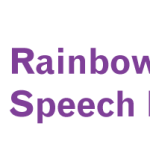HOW YOU CAN HELP YOUR CHILD WHO STUTTERS

As discussed in previous posts, there are a number of factors that can impact on a child’s stutter. According to Yaruss, Coleman, and Hammer (2006) these factors can be organised into 3 different groups: child related factors, factors based on their life experiences, or communication stressors. Child factors are specific to the child and can’t easily be changed. These include: family history of stuttering, gender ( boys more likely to stutter than girls) and a reactive personality. Life experiences are situations that may be triggering the stutter such as a death in the family or or accident.
Communication stressors are within the communication environment such as:
- Being asked open ended questions (which they may not cope with if they have poorer language)
- If they experience times of fast-paced demands (too many questions are is also impacted by their language ability)
- If they have to compete to talk with a sibling or relative who talks quickly (could be impacted by poor language and speech difficulties)
- If they experience negative reactions to their stutter (this could affect their temperament if they are overly anxious)
Factors that are specific to the child and life experiences are not able to be influenced easily (you can’t change your family history!). What can be changed are stressors within the communication environment. We can aim to create a positive communication environment for children who stutter and reduce existing demands on their communication. To do that we need to tune in to our child’s stutter and determine why they are stuttering in those particular moments. We look at the environment where their stutter is occurring and try to alter or remove some of the communication stressors that may be impacting on their fluency.
Once we have considered the child’s speech environment, there are some strategies we can try to help facilitate stutter free speech:
- Model an easier more relaxed style of communication – slightly slower speaking rate with more pauses to reduce their speech and language demands
- Minimize interruptions and have 1-on-1 conversations – help the whole family work on good turn taking skills to reduce speech and language demands
- Ask more restricted questions – instead of asking, “how was your day?” ask “what did you do for lunch?” How and Why questions generally require more thought and planning than a what question.
- Show that you are listening carefully by reflecting and rephrasing their messages while providing an easier communication model (repeat what they said back calmly and clearly).
- Try to control any negative reactions to stuttering. Avoid using terms such as “good” or “bad” to describe stuttering. We want to create a positive environment for their communication and reduce any anxiety they may have when speaking.
Your speech pathologist can help you identify some of the communication stressors in the child’s environment. They may also suggest a more formal intervention program, such as the Lidcombe Program. We will go into more detail about this program, next time!
References
Yairi, E. & Ambrose, N. (2005). Early Childhood Stuttering: For Clinicians By Clinicians, ProEd, Austin, TX.
Yaruss JS, Coleman C, Hammer D. Treating preschool children who stutter: description and preliminary evaluation of a family-focused treatment approach. Lang Speech Hear Serv Sch. 2006 Apr;37(2):118-36. doi: 10.1044/0161-1461(2006/014). PMID: 16646215.
Yaruss, J. S., & Reardon, N. (2010). Young Children Who Stutter: Information and Support for Parents. New York: National Stuttering Association (NSA).
Written by Jonathon Cronk – Speech Pathologist


